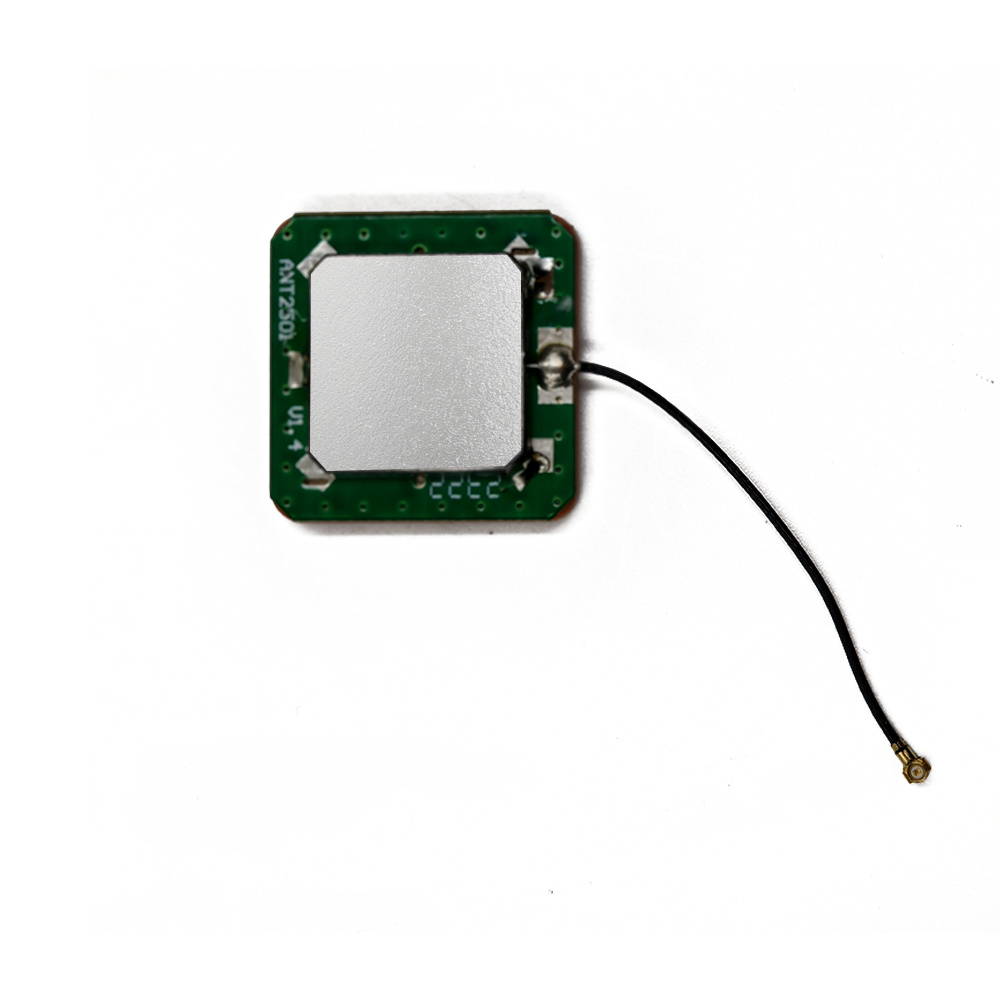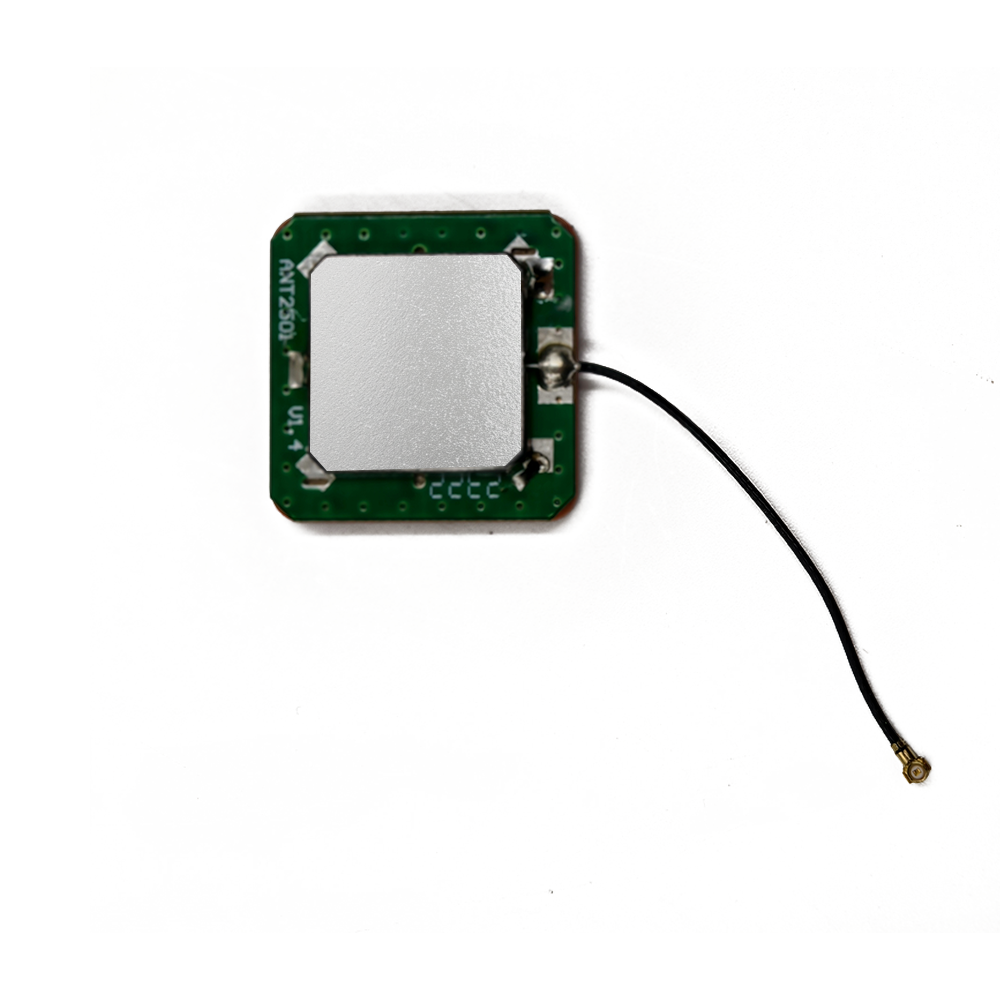Built-in RTK GPS ceramic antennas have revolutionized data collection workflows across numerous industries that rely on centimeter-accurate positioning. Their application is defined by the need for high precision combined with operational efficiency and mobility.
Applications:
Construction Site Layout and Machine Control: Surveyors use RTK rovers to precisely stake out the locations of foundations, walls, and columns from digital design plans. Furthermore, these antennas are integrated into bulldozers, graders, and excavators for machine guidance and control, automatically guiding blades and buckets to the correct grade without the need for traditional grade stakes.
Precision Agriculture: Agricultural RTK systems guide tractors with 2-3 cm accuracy for automated planting, spraying, and harvesting. This enables practices like variable rate application (applying seed, fertilizer, or pesticide only where needed), reducing waste and increasing yields. The rugged, integrated design is essential for the dusty, vibrating environment of a farm.
Cadastral and Topographic Surveying: This is the traditional core of surveying. RTK systems are used to establish national grids, mark property boundaries, and create highly detailed topographic maps of the land's surface for engineering and design projects. The portability of the integrated pole allows surveyors to access difficult terrain.
Utility Mapping and GIS: For mapping the location of underground assets (gas lines, water valves, fiber optic cables), the speed and accuracy of RTK are invaluable. GIS professionals use it to accurately attribute geographic data in the field.
Monitoring and Deformation Analysis: Networks of RTK receivers (often base stations) with stable antennas are used to monitor minute movements of critical infrastructure like dams, bridges, volcanoes, and landslides over time, providing early warning of potential failures.
Drone-Based Photogrammetry and Lidar: Integrated, lightweight RTK antennas are mounted on Unmanned Aerial Vehicles (UAVs). They provide precise geotagging for each aerial photograph or lidar point, creating highly accurate orthomosaics and 3D models without the need for numerous ground control points.
Future Trends:
Towards Full-Band, Multi-Constellation Support: The future is "all signals, all constellations." Next-generation antennas will need to support all current and planned signals, including the new L1C, L2C, and L5 from GPS, and similarly modernized signals from other constellations. This demands even wider bandwidth designs and more sophisticated multi-resonant patch structures.
Tighter Integration with Inertial Navigation Systems (INS): The fusion of GNSS with Inertial Measurement Units (IMUs) is becoming standard for mobile mapping. The trend is towards deeply integrated GNSS-INS systems within a single housing, providing continuous centimeter-level positioning even during short GNSS outages (under bridges, in tunnels, under tree cover). The antenna's stability is critical for calibrating the IMU in real-time.
AI-Enhanced Multipath Mitigation: Future systems may incorporate artificial intelligence to analyze the signal characteristics in real-time and identify and filter out multipath that manages to bypass the antenna's physical mitigation techniques, further improving accuracy in challenging urban canyons.
Miniaturization for New Platforms: As robotics and autonomous systems advance, there will be a push to further miniaturize high-precision antennas for integration into smaller platforms like delivery robots, augmented reality headsets, and even consumer devices for emerging applications.
Cloud-Based Calibration and Corrections: The phase center calibration model could become a dynamic, cloud-based service. The antenna could report its serial number to a correction service, which would then stream a tailored, potentially even real-time refined, calibration model to the receiver in the field, pushing the boundaries of accuracy.
Resilience to Jamming and Spoofing: As reliance on GNSS grows, so do threats from intentional jamming (blocking signals) and spoofing ( broadcasting fake signals). Future antenna designs may incorporate adaptive null-steering capabilities to automatically null out interference sources, protecting the integrity of the positioning solution.
Conclusion
The built-in RTK GPS ceramic antenna represents a pivotal convergence of precision electromagnetics and practical field engineering. It is a component that has been elevated from a simple receiver to a calibrated, mission-critical sensor, forming the foundation upon which the entire edifice of modern high-accuracy positioning is built. Its development and refinement have been directly responsible for transforming RTK from a complex, cumbersome technique used only by specialists into a accessible, reliable, and efficient tool deployed daily across countless industries.
The core achievement of this technology is its successful reconciliation of the inherent conflict between performance and portability. While it acknowledges that a compromise must be made against the gold standard of a large geodetic antenna, it minimizes this compromise through intelligent design, advanced materials, and sophisticated calibration. The result is a system that delivers superlative performance—characterized by exceptional phase center stability, superior multipath rejection, and multi-frequency capability—in a package that is rugged, portable, and simple to use.
The advantages of integration—eliminating cabling, reducing setup time, minimizing user error, and ensuring a perfectly matched system—have proven overwhelmingly valuable for the vast majority of field applications. This has democratized centimeter-accurate positioning, empowering not just surveyors but also farmers, construction workers, and GIS professionals to perform their work with unprecedented levels of efficiency and confidence.
Looking forward, the role of the built-in antenna will only grow more critical. The insatiable demand for higher accuracy, faster initialization times, and more reliable operation in challenging environments will continue to drive innovation in materials science, electromagnetic design, and signal processing. The trends towards full-band support, deep INS integration, and AI-powered enhancement are not mere incremental improvements but are steps towards creating ever more robust and intelligent positioning systems. The built-in RTK ceramic antenna, though hidden from view, will remain the silent, stable, and precise foundation upon which the future of autonomous systems and the digitally-mapped world is constructed.




































































 Language
Language
 En
En Cn
Cn Korean
Korean

 Home >
Home > 






 18665803017 (Macro)
18665803017 (Macro)













